|
The “Concord Hymn” by Ralph Waldo Emerson was written for the dedication of the Battle Monument on July 4, 1837 in Concord, Massachusetts. It commemorated the Battle of Concord which took place at the North Bridge at the outbreak of the American Revolution. By the rude bridge that arched the flood, Their flag to April’s breeze unfurled, Here once the embattled farmers stood And fired the shot heard round the world. The foe long since in silence slept; Alike the conqueror silent sleeps; And Time the ruined bridge has swept Down the dark stream which seaward creeps. On this green bank, by this soft stream, We set today a votive stone; That memory may their deed redeem, When, like our sires, our sons are gone. Spirit, that made those heroes dare To die, and leave their children free, Bid Time and Nature gently spare The shaft we raise to them and thee. While visiting relatives in New England last month I had the opportunity to spend time in the towns of Concord and Lexington in Massachusetts. These towns witnessed the opening salvos of the Revolutionary War nearly 250 years ago. On the morning of April 19, 1775 hundreds of British soldiers left Boston and marched toward Concord to capture and destroy stockpiles of gunpowder and military supplies stored by the local militia. Along the way the British soldiers confronted seventy-seven militia men waiting for them on Lexington Green. No one is sure who fired the first shot, but within minutes eight colonial militia men were killed and several more were wounded. The British suffered only one minor casualty and soon resumed their march to Concord. Once in Concord, British soldiers searched homes and barns for military supplies, and burned all that they found. Thinking that the soldiers had set their town on fire, the local militia confronted the British soldiers at the North Bridge. The soldiers fired upon the militia, killing two men and injuring several more. A militia officer ordered his men to return fire and two British soldiers were killed. This was an act of treason against the British government and the spark that ignited the American Revolutionary War. At the Minute Man National Historical Park I joined a guided walk along the Battle Road Trail, part of the colonial Bay Road where several battles and skirmishes took place on that fateful day in 1775. As we walked along the woodland path lined with maple, oak and beech trees alight in their colorful autumn splendor, it has hard to imagine the enormity of the events that had taken place here. But a black cloud hung over New England that day, as was the case on April 19, 1775. The news of a horrific mass shooting in Lewiston, Maine the previous night was being reported, and the details of the carnage were being updated throughout the day. An Army reservist with a history of mental illness had killed eighteen people and wounded thirteen others using an AR-10 assault rifle. Walking along Battle Road that day, I couldn’t stop thinking about the senseless slaughter of innocent people that took place the previous night. Sometime later I came to the realization that the mass shooting in Maine was somehow rooted in the events that took place in Concord in 1775. The local militias in Concord, Lexington, and surrounding communities had effectively repelled professional soldiers of an overseas king. There was no going back. Colonial Militias: In colonial times a militia represented a military force raised from the civilian population, for the common defense of the community. Militias were distinct from professional soldiers, and were generally organized around towns, regions, or colonies. Members of Massachusetts militias were required to possess and be skilled in the use of a musket, powder, and shot. Local militia units from all of the thirteen original colonies were the backbone of George Washington’s army during the Revolutionary War. The “Militia Act of 1792” stipulated that the militia would consist of each and every able-bodied white male citizen of the respective States, who is at least 18 years of age and under the age of 45. At the start of our new republic, the founding fathers feared that a standing army could be used to suppress the liberties of the citizens, and therefore opposed the formation of one. But they needed to provide for the common defense, and saw the state and local militias as a necessary compromise. It should therefore be no surprise that armed militias were enshrined in the U.S. Constitution. Second Amendment: The 2nd Amendment to the Constitution was adopted in 1791. It states “A well regulated Militia, being necessary to the security of a free State, the right of the people to keep and bear Arms, shall not be infringed”. A lot has changed in the United States since the Second Amendment was adopted. The traditional concept of a civilian based militia no longer exists, and state-based militia organizations have been incorporated into the federal military structure. You can find more information on the history of militias in the United States in one of my previous blog posts. Repeal or Replace the 2nd Amendment: If I was king for a day, I would do away with the 2nd Amendment. That is not to say that I would abolish all access to guns by law abiding citizens. There are legitimate reasons, such as sport and personal protection, for citizens to have access to certain types of guns. But I am convinced that meaningful gun control legislation cannot happen in this country without repealing or replacing the 2nd Amendment. The 2nd Amendment is why we have metal detectors and security guards in schools. It is why mass shootings are common place, and citizens are allowed to parade around openly carrying military style assault weapons. The 2nd Amendment justifies use of military grade armaments and tactics by law enforcement. The 2nd Amendment has given rise to the NRA and other pro-gun lobbies which have corrupted our political system. The 2nd Amendment has had a damaging impact on modern American society. Short of amending the Constitution, guns are here to stay. Fortunately, even the most conservative courts acknowledge that gun regulation does not violate the Second Amendment. Even without amending the Constitution there are some common-sense things that Congress can do. Common Sense Gun Reform Measures: (For more detail on these gun reforms refer to Part 4 of my blog series, Guns in America.
The violent manner in which this country was founded has repercussions to this very day. The events at Concord and Lexington on April 19, 1775 cemented the use of fire arms by the civilian population in America. The 2nd Amendment enshrines it in our Constitution, and our conservative Supreme Court will see to it that this doesn’t change anytime soon. Approximately 42% of American households own at least one gun, and there are reportedly more guns in this country than there are people. Clearly gun ownership is a cultural issue, and it takes a lot of time to change cultural norms. But gun regulation is not a cultural issue. It is a legal and political issue, which can be influenced by the courage and will of the people. No matter where you stand on the gun control issue, I think we can all agree that something needs to be done to reduce gun violence in America. For the sake of the grieving families in Lewiston, Maine, let’s hold Congress accountable for not taking action on meaningful gun reform. If you enjoy reading this type of commentary please subscribe to my blog and tell a friend. You will receive an email notification when new blogs are posted. The email will come from the site’s email: [email protected].
Thanks, Armchair American
1 Comment
Donald Trump’s rein of terror on the Republican Party continues unabated. Of the ten Republicans who voted to impeach Trump over his involvement in the January 6th Capitol riot, only two have survived to go on to the general election in November. Representative Liz Cheney of Wyoming is his latest victim. The fact that Liz Cheney lost her seat in the House of Representatives to a Trump-backed candidate is no surprise to anyone. Cheney is one of Trump’s most outspoken critics in the Republican Party, and is the vice-chair of the Congressional subcommittee investigating January 6th. Denying the results of the 2020 presidential election and downplaying the events at the Capitol on January 6, 2021, are the only political ideologies that matter in the Trump Party. I want to thank Liz Cheney, for being an American first and a Republican second. She sacrificed her House seat by standing up for truth, democracy, and the Constitution. That took courage, a rare commodity in politics today. She has shown that a “principled politician” is not an oxymoron. Liz Cheney demonstrated that patriotism does not mean blind obedience to a political party or a political leader. Rather, it is taking a firm stand against a political onslaught in defense of the rule of law and the principles that this country was founded on. I hope that she continues to stand proud while others in her party call her disloyal, unpatriotic, or un-American. What is un-American is being punished for speaking truth to power, questioning authority, and standing on your principles. Liz Cheney is down, but not out. This week she announced the creation of a new political action committee, “The Great Task”. According to a Cheney spokesperson, the committee will “educate the American people about the ongoing threat to our Republic, and to mobilize a unified effort to oppose any Donald Trump campaign for President”. Cheney has said that she is considering a run for president in 2024, and this would be the platform to launch her presidential run. Whatever she chooses to do, I am confident that she will continue to lead with integrity and courage.
This country needs more politicians like Liz Cheney. For the sake of the Republican Party, and indeed the country, I hope that she continues to be politically engaged, if for no other reason, to help dispel the falsehoods emanating from the Republican Party. Someday the Republican Party will wake up from its self-induced dystopian nightmare and find Donald Trump nowhere to be seen. But Liz Cheney will still be standing. If you enjoy reading this type of commentary please subscribe to my blog and tell a friend. You will receive an email notification when new blogs are posted. The email will come from the site’s email: armchairamerican1776 @gmail.com. Thanks, Armchair American What do you call a group of black men with guns? A gang! What do you call a group of white men with guns? A militia! To put it mildly, this has been a difficult summer. The pandemic continues unabated, the country has endured devastating flooding down south and historic wild fires out west, and protests against racial injustice continue in several U.S. cities. Many of these protests have devolved into ugly and violent confrontations between protestors, law enforcement and counter-protestors. What really disturbed me was the presence of armed members of militia groups at several of the protests. Watching heavily armed men, who were not authorized law enforcement agents, patrolling the streets of America left me with a sense of foreboding. My fears were realized last month when a 17- year old boy with an automatic weapon, shot and killed two people at a protest in Kenosha, Wisconsin. After my outrage began to subside, it got me thinking about the militia movement and its legitimacy. Are these groups legal and what exactly constitutes a militia? History of Militias in America: Militias have existed in America since colonial times. We all remember the Minutemen who confronted British soldiers in the years leading up to the Revolutionary War. The definition of what a militia is, as defined by Congress, has changed over time. In colonial times a militia represented a military force raised from the civilian population, for the common defense of the community. Militias were distinct from professional soldiers, and were generally organized around towns, regions, or colonies. Militias are enumerated in Article 1, Section 8 of the U.S. Constitution. Clause 15 grants Congress the power “To provide for calling forth the militia to execute the Laws of the Union, suppress Insurrections and repel Invasions”. Clause 16 grants Congress the power “To provide for organizing, arming, and discipling the militia, and for governing such Part of them as may be employed in the Services of the United States, reserving to the States respectively, the Appointment of the Officers, and the Authority of training the Militia according to the discipline prescribed by Congress”. Even before the ratification of the Constitution in 1788, we learned about the intentions of these “Militia Clauses” from the Federalist Papers. The Federalist Papers were authored mainly by Alexander Hamilton and James Madison, and were published in New York newspapers to promote the ratification of the Constitution. Hamilton dedicated Federalist No. 29 to the issues concerning the militia. The founding fathers feared that a standing army would be used by a tyrannical government to suppress the liberties of the citizens. But they needed to provide for the common defense. They saw state militias as a necessary compromise. Militias are “the only substitute that can be devised for a standing army, and the best possible security against it, if it should exist”, (https://guides.loc.gov/federalist-papers/text-21-30). The 2nd Amendment to the Constitution was adopted in 1791. It states “A well regulated Militia, being necessary to the security of a free State, the right of the people to keep and bear Arms, shall not be infringed”. The “Militia Act of 1792” stipulated that the militia would consist of each and every able-bodied white male citizen of the respective States, who is at least 18 years of age and under the age of 45. No other major legislation concerning militias was passed until the “Militia Act of 1903”, which repealed the Act of 1792. The 1903 Act divided the militia into two classes; the “Organized Militia”, which was the National Guard, and the “Unorganized Militia”, which was the reserve militia consisting of all male citizens of at least 18 years of age and below the age of 45. The Act offered federal funds to each state to train and equip its National Guard and set policies and procedures for training. The president was empowered to call up the National Guard for up to nine months to repel invasion, suppress rebellion, or enforce federal laws. The federal government was not allowed to order the National Guard to serve outside of the United States. The “Militia Act of 1908” removed the nine-month limit on federal service, and gave the president the authority to set the length of service. In the lead up to the United States’ involvement in World War I, the “National Defense Act of 1916” was passed. It gave the federal government more control over the National Guard. Guardsmen were now required to take both state and federal oaths of enlistment. When called to active duty by the federal government, Guardsmen were relieved of their status in the State Militia and were federalized to operate outside of the United States. The 1916 Act was amended in 1933 to create a reserve component of the United States Army called the “National Guard of the United States”. Since then, all National Guardsmen (and women) have been members of both their State National Guard and the National Guard of the United States. Modern Militia Movement: This country was built on the blood, sweat, and tears of rugged individualists. Their founding principles revolved around individual rights, personal freedoms and civil liberties. These founding principles are held dear by most Americans, but seem to motivate some people to extremes. This is the case with many antigovernment groups. “Antigovernment” is a broad category of groups tracked by the FBI and civilian organizations such as the Southern Poverty Law Center (SPLC). Some groups are racist, some are hate groups, some are white nationalists, and some are militias. There are some groups that just want to be left alone, like survivalist groups, and members of various “Sovereign Citizens” groups. There are armed “Insurrectionists” intent on anarchy or over-throwing the government. There are right-wing “Patriot” groups who see themselves as protectors of the Constitution, and the last defense against an overreaching government. There are militia groups made up of all races and creeds. But most militia groups fall into the far-right Patriot category. The modern American militia movement has been fed by white supremacy, conspiracy theories and bigotry. The main thrust of these theories is that the federal government is controlled by a mysterious elitist cabal which plans to take away Americans’ guns, overthrow local governments and install martial law over citizens. Another motivating theme is that the left is trying to flood America with immigrants who will vote Democrat and upset the balance of power. The real danger of these groups has been their support of racist and violent causes. They are highly visible at white supremacist rallies and frequently act as counter-protestors at Black Lives Matter marches. Several militia members have been convicted in recent years of acts of violence against Muslims and destruction of mosques. There have always been militia groups in America operating on the fringes of society. Two key events have sparked the modern militia movement. The first was the 1992 armed standoff between Randy Weaver and US Marshalls at his compound in Ruby Ridge, Idaho. Weaver was a white supremacist who was being served a warrant for weapons violations. An armed confrontation ensued, resulting in the deaths of Weaver’s wife and son, and a US Marshall. The other incident was the 1993 raid by federal agents on the Branch Davidian compound in Waco, Texas. The raid went terribly wrong, resulting in a 51-day siege, leaving 76 people dead. These two incidents fueled the view that the government was out of control. According to the SPLC, antigovernment groups peaked around 1996 at over 860. The 1996 bombing of the Oklahoma City Federal Building killed 168 people. This heinous crime was perpetrated by Timothy McVeigh who had ties to a Michigan militia group. The national spotlight on this event precipitated a decline in the militia movement. Over the following decade the number of active militia groups declined from 441 to 35 according to the SPLC. The election of Barack Obama in 2008 saw a resurgence in the militia movement. This was spurred on by the racist “birther” movement which questioned Obama’s legitimacy, and out of fear that the government would begin to confiscate guns. The two largest and well-known militias in the country, “The Three Percenters” and the “Oath Takers” were started around this time. The Three Percenters was started by Mike Vanderboegh, a gun rights activist from Alabama. It is named for the dubious theory that during the Revolutionary War only three percent of Americans took up arms against the British. It is a loosely affiliated group active in most states with no formal leadership structure. According to their website (thethreepercenters.org), their goal is “to utilize the fail safes put in place by our founding fathers to rein in an overreaching government and push back against tyranny. We are working to preserve the intent of our government as designed”. The Oath Keepers was founded by Stewart Rhodes, a Yale Law School graduate and former U.S. Army paratrooper. According to their website (oathkeepers.org), it is a non-partisan association of current and former military, police, and first responders who pledge to keep and fulfill the oath to “defend the Constitution against all enemies, foreign and domestic”. Oath Keepers pledge to defend the Constitution above all else, and follow the group’s orders and bylaws over those of elected officials and the agencies which employ them. Oath Keepers mostly recruit from the ranks of the military and law enforcement because they have weapons and tactical training. Those without military or law enforcement experience may join as associate members to support the cause. The Oath Keepers has a structured organization with leadership at the national, state, and local levels. It hopes to create a network of militias across the country. The group’s moto is “Not on Our Watch”. Their websites describe these groups in reasonable terms, but they are very active and well known to the FBI and law enforcement agencies in all 50 states. These groups provide the justification for members to take the law into their own hands, often at gun point, as we have seen at the border and during Black Lives Matter protests. Many militia group members adhere to the beliefs of the QAnon conspiracy theory. Here is a link to my post on QAnon in case you didn’t read it: (https://armchairamerican.com/blog/qanon-what-is-it-and-should-we-care). In the QAnon theory, Donald Trump is a lone heroic warrior, elected to defeat the deep state. It appears as if Donald Trump is the one government official that the antigovernment movement can get behind. The president’s anti-immigrant rhetoric and his border policies feed right into the philosophies that motivate many of these groups. To make matters worse, the president refuses to condemn the right-wing extremism we have witnessed. His lack of condemnation of the violence in Charlottesville in 2017 is a prime example of this. To this day he blames all of the violence at Black Lives Matter protests on “antifa”, when the majority of it has been caused by right-wing movements (https://www.npr.org/2020/09/02/908347989/former-dhs-official-white-house-failed-to-take-far-right-extremism-seriously). Are Private Militias Legal: Private or citizen militias are armed military groups composed of private citizens and they are not recognized by federal or state governments. Some states ban private militias outright, but all fifty states have some provision in their state law that prohibits private military and paramilitary activities. Forty-eight states have constitutional provisions requiring all military activities, private or otherwise, to fall under the control of civil authorities. Twenty-nine states have statues that prohibit the formation of private military units without the authorization of the state government. These statues specifically prohibit such groups from parading or drilling in public with firearms. Twenty-five states have statues that criminalize certain paramilitary activity, such as training others in the use of firearms or explosives for the purpose of creating civil disorder. Most states have laws against “false assumption”. This includes assuming the duties of a law enforcement agent, and the unauthorized wearing of military uniforms. In recent years we have seen many of these laws violated at the southern border, at right-wing rallies, and at Black Lives Matter protests. These laws were put in place to prevent the type of chaos and violence witnessed at the 2017 Unite the Right rally in Charlottesville, Virginia. The rally attracted many heavily armed militia groups dressed in military fatigues. These groups purported to be acting in the role of “peace keepers”, in violation of Virginia state laws. All summer we have witnessed protests in the wake of the killing of George Floyd. Many of these protests were met by counter-protestors from private militia groups dressed in military gear and carrying assault rifles. These groups claimed to be keeping the peace and protecting private property. This put them in violation of state “assumption laws”. Beyond being illegal, these activities have led to deadly shootings in Portland, Oregon and Kenosha, Wisconsin.
For a complete list of the laws governing private militias in all 50 states, Georgetown University has a comprehensive review: (https://www.law.georgetown.edu/icap/wp-content/uploads/sites/32/2018/04/Prohibiting-Private-Armies-at-Public-Rallies.pdf). Militia groups are active in all fifty states and membership is in the tens of thousands. The number of militias peaked in 2011 at 334, and in 2019 there were 181 active militia groups being tracked by the Intelligence Project of the Southern Poverty Law Center (https://www.splcenter.org/fighting-hate/extremist-files/ideology/antigovernment). Militia groups have an idealized view of America, one that reflects the spirit of the Constitution, and their actions are justified by patriotism. These groups portray themselves as innocent neighborhood watch type groups, but they are not. The FBI considers well-armed militias to be a significant threat, and members of these groups have participated in a number of acts of domestic terrorism. We have a president who refuses to condemn these groups because many of their members are part of his political base. Acts of violence continue to occur at legitimate protest marches, and we are a few short weeks away from a very contentious presidential election. President Trump is doing his darndest to cast doubt on the integrity of the upcoming election. He views voting by mail as fraudulent and has stated that the only way that Joe Biden can win is by fraud. But we have heard this tune before. Before the 2016 election, Trump accused the Democrats of “rigging” the election and told his supporters to be on the lookout for voter fraud. The Oath Keepers heard this as a “call to action” and asked its members to station themselves at polling places around the country to “help prevent criminal fraud and attempted criminal voter intimidation on election day”. Are we in for a repeat in 2020? Unfortunately, I think we are. The presence of any outside groups at polling places, particularly armed groups, is voter intimidation pure and simple. We need to be aware of it and bring it to the attention of law enforcement if we witness it. I don’t even want to think about what could happen if Donald Trump feels that the election is stolen from him. We also need to make sure that our local law enforcement agencies are enforcing the laws which regulate militia group activities at protests and rallies. These groups claim to be protecting the streets for the citizens of the country, but I see it differently. If you enjoy reading this type of commentary please subscribe to my blog and tell a friend. You will receive an email notification when new blogs are posted. The email will come from the site’s email: [email protected]. Thanks, Armchair American |
AuthorThe Armchair American. Archives
November 2024
Categories
All
|

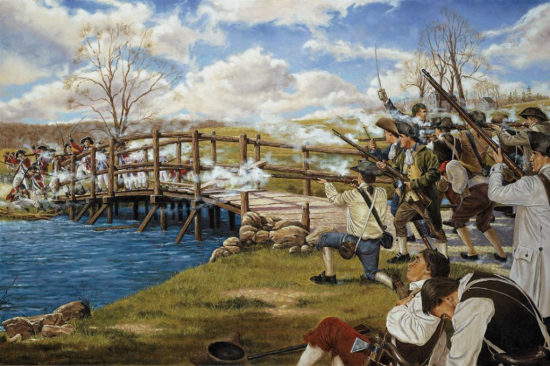


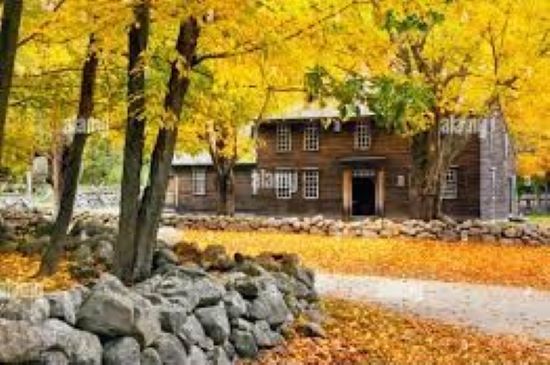






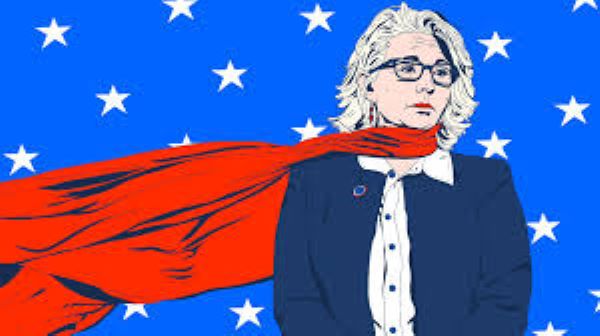





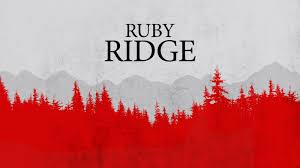



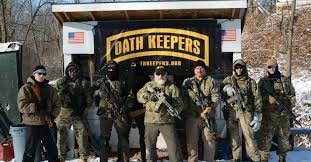



 RSS Feed
RSS Feed